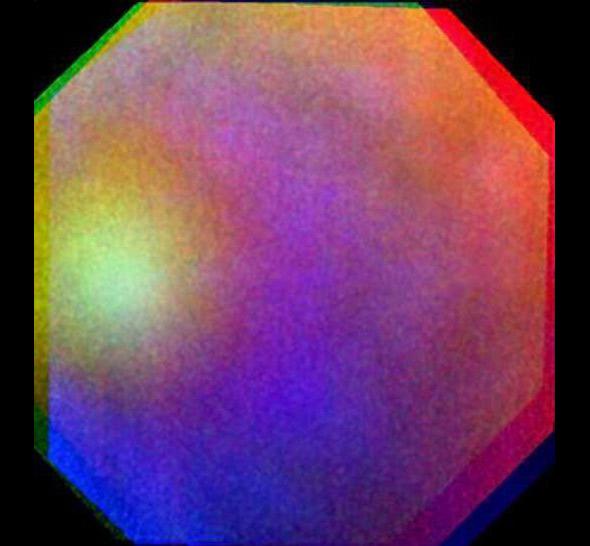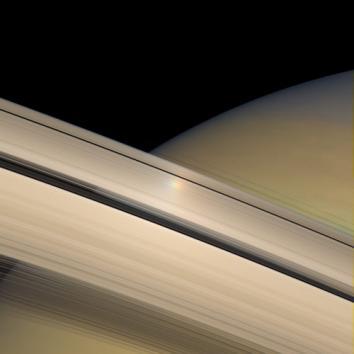It’s not too often that I get to combine two of my true loves … like astronomy and weird optical effects.
My love of astronomy should be pretty obvious, and if you’ve read this blog (or follow me on Twitter and Facebook) for more than about eight nanoseconds you know I love me some optical illusions, iridescent clouds, light pillars, halos, parhelia, and more.
So I’m actually pretty happy to be able to show you a mashup of the two that is not only pretty cool, but also scientifically useful: a glory on Venus.

Photo by ESA/MPS/DLR/IDA
That decidedly weird picture is from the European Space Agency’s Venus Express, a probe that has been orbiting our hellish sister world since 2006. On July 24, 2011, the spacecraft took this image while looking straight down into the planet’s thick atmosphere when the Sun was directly above it. Why is that important?
A glory is an optical phenomenon, where light is bent by tiny droplets in the air. This is similar to how a rainbow works, but in this case the exact mechanism is still under debate. For the effect to work the Sun has to be directly behind the observer and shining into a bank of liquid droplets. The light gets broken up into its individual colors, which form concentric circular halos centered on the shadow of the observer’s head (or more technically the anti-solar point). They’re pretty commonly seen from airplanes; I’ve observed them many times when the Sun is shining down on the opposite side of the plane, and I can see clouds and the plane’s shadow out my window.
The size of the halo and the colors depend on the size of the droplets and the amount they bend light, which depends on the chemical composition of the droplets. On Earth, of course, we’re talking water, but on Venus it’s not so easy. The majority of the atmosphere there is carbon dioxide, but there are a myriad of other molecules floating around there as well, making it rather difficult to determine what’s what in the thick murk.
This image of the glory may help figure that out; we know the optical properties of the gases in the atmosphere of Venus, so a computer model can be made to simulate those conditions (pressure, temperature, composition, and so on) to hopefully narrow down the possible sources of this optical effect. At the moment that work is ongoing.

Photo by NASA/JPL/Space Science Institute
To my knowledge this is the first time a glory has been seen on another planet; a similar but different effect in Saturn’s rings nearly fooled me once a while back, and it’s even been seen on Earth from space! But a true glory on another planet hasn’t been detected until now.
Pretty cool. This never would have occurred to me to look for in the data, which shows me that we have very, very clever people out there who are trying to squeeze every last gram of useful information out of our probes in space. That’s just as it should be! You never know what treasures are hidden there.